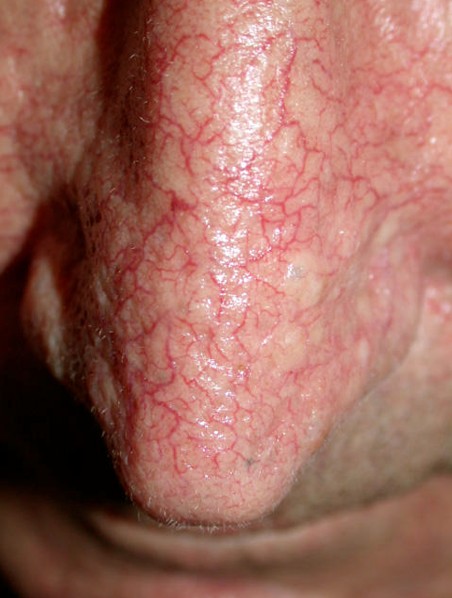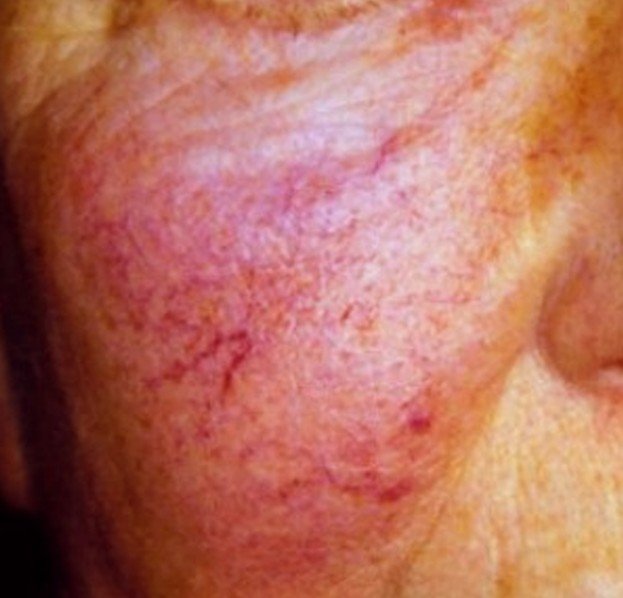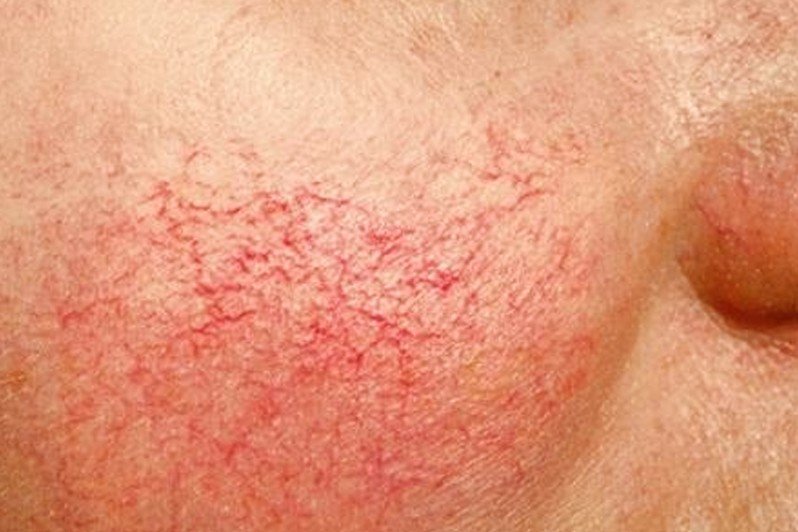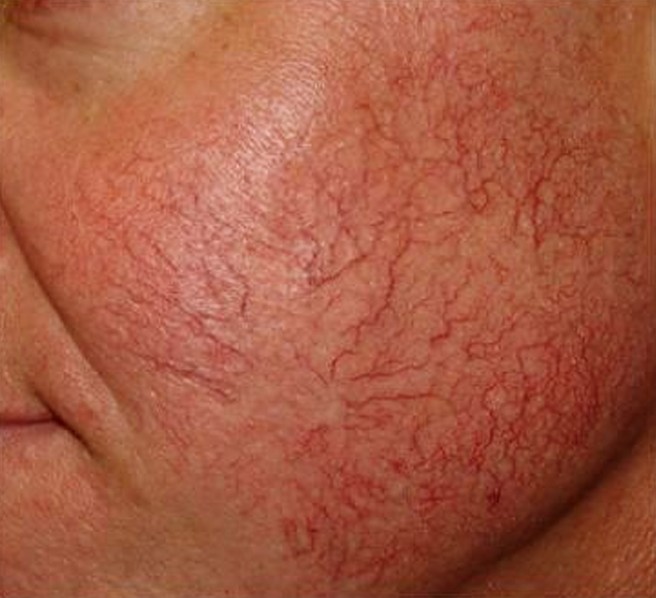Telangiectasia
What is Telangiectasia?
This is a blood vessel that is most often found in a mucous membrane or in the outer layer of your skin. This blood vessel can be a capillary, arteriole, or small vein. They have dilated and have been left enlarged permanently. It can be found anywhere on or in your body but are most commonly seen on your legs and face. You will usually see them on below your knees and on the surface of your ankles and thighs and around your nose, cheeks, or chin on your face. They can also be seen on the whites of your eyes. Although they are usually harmless there is also a chance that they can occur in your brain and cause some major problems from bleeding. On your legs they are sometimes referred to as spider veins.
Telangiectasia Symptoms
Many times when these lesions develop on people that are healthy they usually do not cause any symptoms. What you might see is that this permanent dilation can cause a reddish discoloration in the surrounding skin. This happens because of the small lesions that develop. When this happens it makes telangiectasia easier to see.
- When telangiectasia appears on your skin, which is also called vascular ectasias, they will look like tiny lines that range in color from red through blue and purple.
- They measure between one and three millimeters in width. They are usually somewhat longer than it is wide.
- They can look unattractive and cause discomfort
- The formation of these lesions is gradually
- They can be painful because of the pressure on the venules
- Itching
Telangiectasia Causes
The exact cause of telangiectasia is not known but according to researchers they believe that it could be because of overexposure to the sun. The reason that researchers think this is because these lesions will usually appear in places that are more exposed to sunlight. Some of the other causes that can possibly cause telangiectasia can include:
- Pregnancy because this can put a large amount of pressure on your venules
- Aging because as you get older the blood vessels start to weaken
- Alcoholism which can affect the flow of blood in your vessels
They can be seen with a number of other diseases like acne rosacea, birthmarks, prolonged use of topical or oral corticosteroids, and long time use of oral contraceptives, several different inherited disorders, and more. It has also been found that telangiectasia can be caused by routine damage to your skin or just appear spontaneously.
Telangiectasia Pictures
 Telangiectasia on Nose surface
Telangiectasia on Nose surface
 Telangiectasia on the right cheek
Telangiectasia on the right cheek
Diagnosis
When seeing your physician or dermatologist they may be able to diagnosis telangiectasia just by the obvious signs of this disease because it can be seen as lines that are red or marks on your skin. Some may do other tests to rule out any underlying diseases that can include:
Sturge-Weber disease
This is a disorder that is rare and can cause nervous system problems and a birthmark that is called port wine stain.
Xeroderma pigmentosa
This is where your eyes and skin are very sensitive to the ultraviolet light. It is considered a rare medical condition.
Hereditary hemorrhagic telangiectasia
This is an inherited disorder of your blood where the blood vessels form abnormally. These are called arteriovenous malformations.
Spider angioma
This is an abnormal collection of blood vessels near the surface of your skin
Some of the diagnostic tests that can be used to see if it is a result of an underlying or not include:
- CT scans
- MRI scans
- X-rays
- Blood tests
- Liver function studies
Telangiectasia Treatment
If you notice telangiectasia on your skin it is advisable that you see your physician to rule out the presence of an inherited or underlying condition. There are also treatments that your dermatologist can do if they are detracting from your personal appearance your dermatologist could treat it by electrosurgery, or a pulsed dye laser. If it is not caused by an underlying condition you could cover it up by using makeup.
Other methods to treat telangiectasia can include:
Laser ablation
The laser targets the vessels that have been widened and seals them. With this treatment there is little pain and a short recovery. This the type of treatment used on your face.
Surgery
With surgery the widened vessels can be removed but this treatment it can take you a long time to recover and can be painful.
Sclerotherapy
This is a cosmetic surgery in which the dermatologist injects a sclerosing agent into your veins. The dermatologist uses one injection for every one inch of vein and as a result you may need between five to fifty injections to treat telangiectasia. This is the treatment that is used on your legs.
Because they are not attractive looking and are causing discomfort many decide to have them removed. This is accomplished by causing some type of damage to your blood vessel, forcing the blood vessel to scar or collapse. By doing this it will decrease the appearance of the patterns or red marks on your skin.


